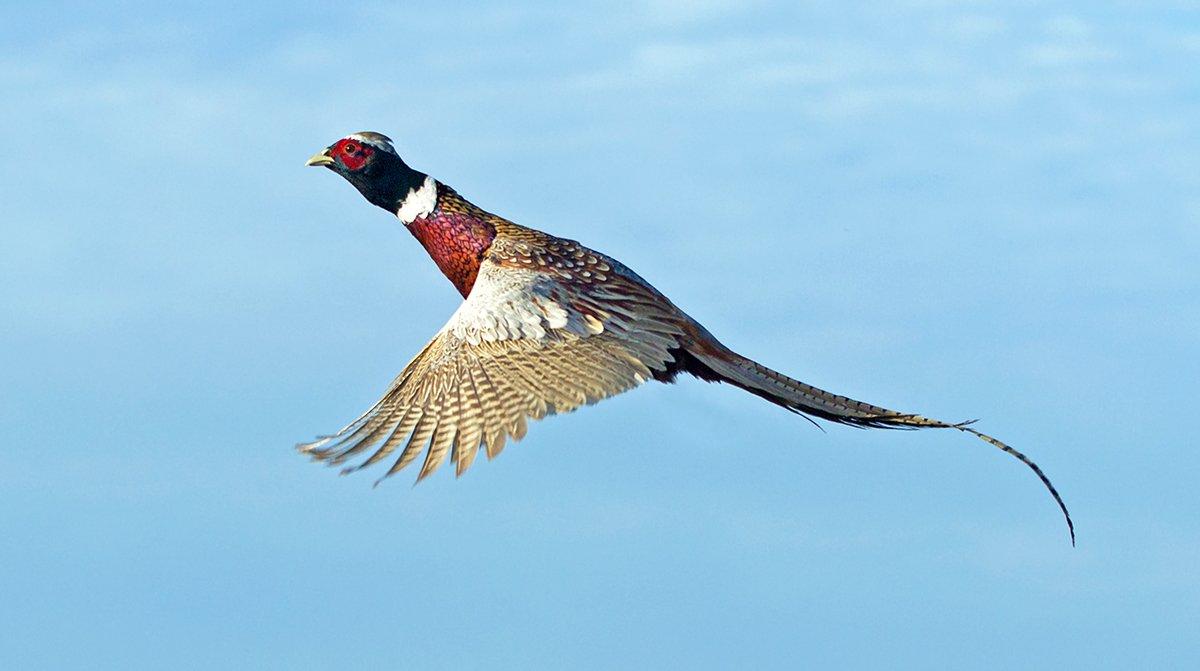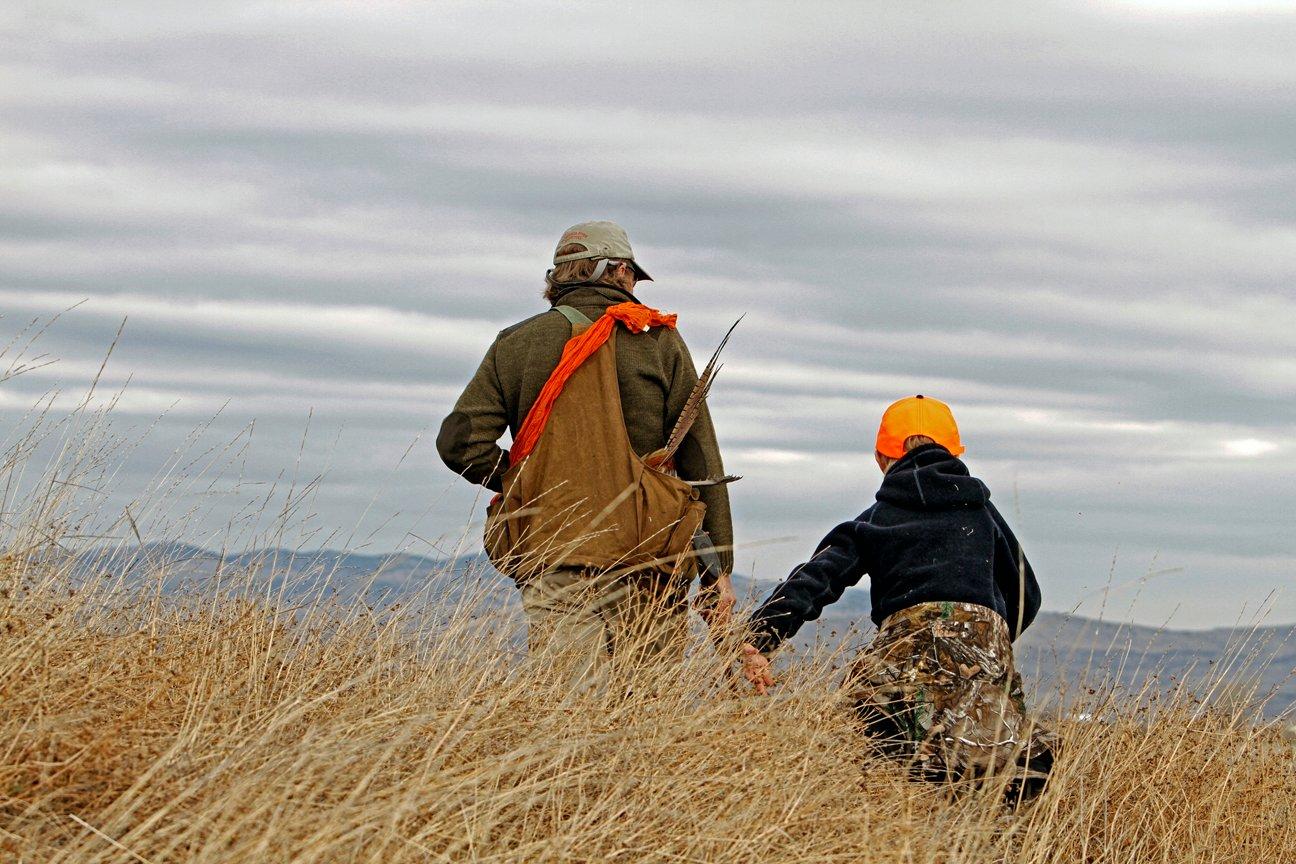School Breaks and Youth Hunting
I suppose kids across the country have it in some form or another: A few days off school in October or early November for teachers to go to their state conventions or do end-of-quarter grading and wrap-up work. In the Midwest where I grew up and still call home, it's a rite of fall. How serendipitous for hunters with pheasants on their minds.
One of my fondest hunting memories stems from such a day. Dad had to work and felt bad about that, but didn't want me to miss any hunting on a beautiful autumn day free of other responsibilities. At 14, I relished the thought of going afield independently — just me and Nikki, our family Bassett hound and pheasant dog (when she wasn't venturing off after her preferred rabbits). Dad and I would hunt together tomorrow, another school vacation day. He dropped me off as the sun was rising over stubble fields of cut corn, neatly cropped and still-green pastures, idle fields of grass, fencerows choked with plum and crabapple thickets, and a ribbon of brush-lined railroad tracks leading four miles back to town: the theatre for my day's hunt.
Properly so, good luck often shines down on the young, innocent and inexperienced. Within minutes I stumbled upon a mother lode of pheasants — it seemed like every bird in the section. They must have been out picking corn kernels next to the tracks, heard the dog and me coming, and scurried as best they could back into the brush. Hens and roosters alike poured out. I emptied my Ithaca 37, reloaded, walked out into the fresh stubble and missed a couple more roosters before jamming the shotgun. Kneeling in the stubble, trying to work on the shell ejector with shaking hands while watching where all the pheasants were flying, I heard a voice:
Andes Realtree Camo Sunglasses by Native Eyewear™
Looks like we've got a problem here. I peered up. The large bearded man wore the garb of a farmer. Looking back now, he had certainly heard me shooting and was probably coming out to see what the ruckus was about. This was the early 1970s, and he was pleased to find a young, eager boy and his dog.
Armed with a pocket knife, he helped me fix the jam with his sausage-sized fingers, then said: Let me get my shotgun; we'll get a couple of those pheasants. And so we did, each taking a rooster out of one of his fencerows before he sent me on my way down the tracks. I filled out my two-bird limit an hour later after a rooster scurried across the rails, made the mistake of hiding in a cattail patch, then lumbered out for a shot even I couldn't miss.
I walked home with a heavy gamebag, as proud as a boy could ever be, showing Mom my prizes and leaving the resplendent birds displayed on our garage's workbench until Dad got home from work. Oh, you did good, he said — words every boy loves to hear.
Fast forward 30 years. The boy has since grown up and moved a little west, from Wisconsin to Minnesota. He has boys of his own. They have a couple days off school while autumn is blessing the land: Thank goodness some traditions live on.
Pheasant fields don't reside out our back door now, but they sure do next door, to the west, in the hunter-friendly land of South Dakota. So we head my old truck into the setting sun on a Wednesday night and wake up to the crowing of rooster pheasants at my friend Brad Boisen's Grand Ciel Lodge.
In South Dakota, pheasant hunting is what it used to be. I wanted Jeremiah and Ethan to get plenty of cracks at birds, enough so that a few misses wouldn't really matter because other opportunities would soon arise. And so they did.
We hunted with Boisen's Braques Francais dogs, also known as French pointers. These handsome, brown-and-white short-haired dogs, which were developed centuries ago on the flanks of the Pyrenees mountains and are the genesis of all today's short-haired pointing breeds, are hunting machines by day and cuddly couch potatoes by night.
Boisen is one of the only North Americans promoting the breed. He travels regularly to France to bring back broodstock to keep diversifying this continent's gene pool. My little Brittany, Rascal, fit right in with the Braques.
The first day, after an unsuccessful swing through a good-looking creekbottom, we watched one of Brad's farmer friends combine a corn field. That was entertainment by itself for boys who had never seen the process. But much more exciting were the pheasants that boiled out, many of them sailing into a stock dam slough in the middle of the picked field.
This was exciting outdoors stuff. Yes, watching a whitetail slowly pick its way into range of your stand makes the soul alive. Putting the sneak on an antelope or mule deer produces an unforgettable thrill. Seeing a flock of mallards set their wings as they approach your decoys makes a heart go pitter-pat. But trying to skulk across a freshly-picked cornfield toward a two-acre patch of ground that you know holds at least several dozen pheasants rivals it all. In a classic pincers movement, we were split into two groups and approaching the cover at different points, when it all broke loose. After the shooting stopped, each boy and their dad had a longtail to hoist in admiration to the infinite Dakota sky, and there were single birds at all points of the compass to track down with the wonderful dogs.
"This was exciting outdoors stuff."
One of the hunt's best moments came the last day, as we worked another section of prime land. The boys each needed a bird to round out a daily South Dakota limit of three. Brad had some business in town, so were on our own for a couple hours.
We were far back in a section. With a good grassy ditch to hunt between a cut cornfield on one side and an abandoned pasture on the other, I instructed the boys to hunt along it while I cut cross-lots to the truck. I would drive along the blacktop road and meet them where the ditch met the pavement.
After pulling up, I got out and sat on the truck's tailgate to watch their progress. The boys were doing their own version of independent hunting. I knew they would be safe, but I wondered how they would fare, alone with the dog but without Dad's guidance. It was good to see them out in the field on this rare opportunity away from the rigors of school and athletics.
As these thoughts crossed my mind, a pheasant flushed. It tumbled from the sky in a puff of feathers before I heard the report of the shotgun from a quarter mile away. One boy — it looked like Ethan — carefully opened his gun, laid it down and jogged out into the pasture with the Brittany to pick up the rooster and hold it up in triumph.
Returning to the hunt, he joined his brother and they continued on. Shortly another bird flushed, this one going out the other direction over the corn stubble. This rooster folded too, but the sound of the shot wasn't quite so far behind. Jeremiah strode out to pick up his bird and swing it toward me in proud salute before having his brother help him stuff the rooster in his gamebag.
The boys unloaded their guns, knowing their hunt for the day was over, and walked slowly toward me, reliving the hunt, reenacting the shots, wanting the sights and smells and joys of the day to linger. Of course all of that would stay with them forever because any boy — no matter what age — can appreciate fine days under friendly skies in good pheasant country.
Oh, you did good, I said, smiling and shaking their hands as they proudly walked up and we laid out their prizes for an admiration session and the re-telling of the stories behind each magnificently-feathered bird. We marveled at the roosters' beauty and mentioned the perfection of the day, feeling mighty glad that we had made this particular autumn recess one for ringnecks.
Go here for more Realtree small game hunting. Follow us on Facebook.









